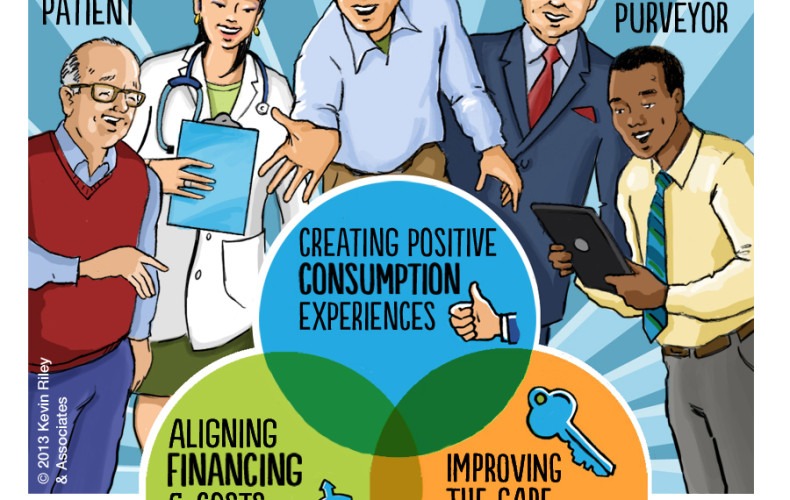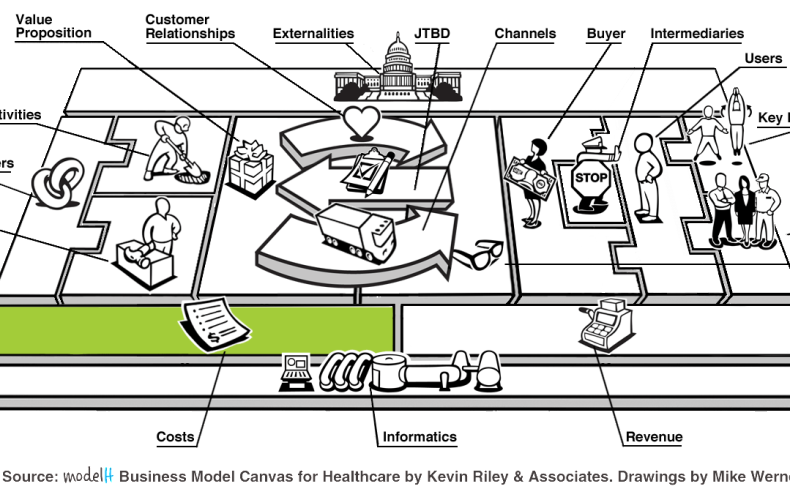We just wrapped up our 17th and final modelH business building block sprint on Externalities. In summary, the sprint for Project 1.17 on Externalities focused on two objectives:
- Proposing a set of questions to ask on the canvas for the Externalities.
- A deeper discussion examining the status of Externalities (and other new blocks) on the Canvas.
 All politics aside, this sprint looks at the understanding how government regulations and other external forces affect your business model. Specifically, we uncovered the key issues that drive and transform your market (and your model) for your business model design with several critical questions. What are the crucial issues related to the changing regulatory and compliance landscape and what shifts are already underway? Where is the market headed due to many regulatory and compliance changes, and how does that affect your business model?
All politics aside, this sprint looks at the understanding how government regulations and other external forces affect your business model. Specifically, we uncovered the key issues that drive and transform your market (and your model) for your business model design with several critical questions. What are the crucial issues related to the changing regulatory and compliance landscape and what shifts are already underway? Where is the market headed due to many regulatory and compliance changes, and how does that affect your business model?
My position for including this building block in our canvas is that almost all healthcare models (at least in my experience) are highly regulated. Therefore, the business model should enumerate the key external forces affect its ability to get to market. Please keep in mind, there was some disagreement amongst the modelH community on this particular section, which we will examine in more detail below.
1st – Questions to Ask on the Canvas for the Externalities Block
We defined the questions that should be added to our business model canvas for helping practitioners define the Externalities that affect their business model.
- What Externalities put constraints on your business model?
- How do these Externalities restrict your Buyers and Users?
- How do these Externalities affect your User’s Key Behaviors?
- How do these Externalities affect your Key Influencers?
- How do these Externalities drive Costs?
- How can these Externalities be turned into Revenue streams?

2nd – Should Externalities be Included on the Canvas?
At this stage – my position is firmly set to keep Externalities as part of our business model canvas. My reasoning is due to several factors:
- Our Phase 1 co-creation project was not a scientific approach but a collaborative one – derived from experts and expert opinion. As such, it is only opinion based.
- We have reached the end of Phase 1 of our project – building the canvas. Phase 2 (in 2014) is all about completing case studies to see how the model works in action. It is a process of boiling down what we have and adding what we missed through trial and error. Consider this a minimum viable canvas approach (see Eric Reis’s minimum viable product design).
However, there continues to be a considerable amount of debate regarding if Externalities should be part of any business model. To clarify, the external environment is undoubtedly important. It affects, influences, and impacts how our business models operate. However, the point of disagreement is whether Externalities should be included as part of the business model.
Stating, “almost all healthcare models are highly regulated” so regulation should become part of the model is much like comparing all firms impacted by Human Resource (HR) regulation. Should HR be built into their business model too? On that note, every business has competition. Should that area be crammed onto our canvases as well? This is a really slippery slope that causes confusion between business modeling and business strategy. If we are committed to taking this model seriously, and determined to make it a viable tool then it is critical to remind everyone what a business model is.
The definition of business model from Wikipedia is: “the rationale of how an organization creates, delivers, and captures value (economic, social, cultural, or other forms of value).” Wikipedia even goes further to note in the first line: “The process of business model construction is part of business strategy.”
Here we have a clear definition of a model as an independent tool for a specific reason. Two other reference links make the point very well regarding why Externalities should not be included – which it turns out is the consensus thinking on the topic. In many ways, I agree with their assessment.
But, Externalities are a core component of a business model in the heavily regulated healthcare environment. One example from Europe is the introduction of health technologies into a system, which cannot be completed without a health technology assessment (HTA). The U.S. Food and Drug Admiration is another applicable example of how Externalities make or break a business idea.
Let us break down this particular dilemma even further. No healthcare business model exists without Externalities – yet the consensus on business model creation is to create the model and then look at Externalities via an environmental analysis. This was the same approach with the original Osterwalder model for not including the Jobs-to-be-done (JTBD) in the core building blocks, but instead view them as “add-ons”.
In light of this argument, for me to include Externalities and the other new building blocks, I believe they need to pass two tests.
Test 1 – Do the new building blocks affect a business’s business model?
The answer is yes – all of them do.
Test 2 – Are the new building blocks needed to explain how a business model works?
In regards to healthcare, I feel these building blocks are necessary. For example:
- The JTBD explains why customers (as Buyers) buy, and is quickly becoming a central part of the original model. This is the heart of why healthcare business models fail – the customer (as Users) do not complete their Jobs-to-be-done (JTBD).
- Key Behaviors and Key Influencers explain what healthcare customers need to realize their Value Proposition.
- Experience explains how we should present our Channels and Customer Relationships to maximize their effectiveness in solving the customer’s JTBD in the context of their Key Behaviors. They are an extension of the Channels and Customer Relationship model – but they are not the actual Channels and Customer Relationship.
- Informatics is also new to the original model. This block is necessary to explain how the model works – when it works well, using the necessary data acquired from customers, Key Resources, Channels and Customer Relationships, and etc.
JTBD, Externalities, Key Behaviors and Key Influencers explain external factors that we must consider as part of our core building block designs. If we don’t, I do not see how we can make effective business models. On that note, they are essential to our business model design and should exists as part of the canvas.
Informatics explains what we need to measure and monitor to both prove and improve our value proposition. This is a means to provide how our business model works. It adds the dimension of feasibility to the canvas, which is instrumental to the design.
In Conclusion
My answer for why to include Externalities can be summed up using a quote from Einstein: Everything should be made as simple as possible, but not simpler. I can appreciate the beauty, simplicity and acceptance of the original Osterwalder model and I use it for my business modeling outside of healthcare. It is also the basis for modelH. However, in regards to healthcare business models, it is not complete in my opinion and that of many of my healthcare colleagues. I would rather have the base model define an effective business idea completely rather than add add-ons over time. Perhaps it is just a matter of style. I am sure many would disagree with this approach – so I will go on record expressing a genuine understanding and appreciation regarding the opposing position.
I also want to honor the work of Osterwalder’s model and keep to the definition of what a business model canvas truly entails – but at the same time provide a single view into a set of tools that help define all the strategic and operational elements of a healthcare business model.
Adhering to the strict definition of a business model is short sighted to me. I care more about the outcome. A good business model design is elemental to that outcome, but alone becomes trivial – it is ultimately about the business outcome. To that, I will defend the elements of our modelH canvas as imperative to driving a better outcome for a healthcare business model design.
I am comfortable with the finer points I enumerated here – but I am not sure if it will come across to someone who has not done a year’s worth of debating on the subject. This undoubtedly is a work in progress. Going forward, if we plan to put all business strategy into a one-page tool – it may be a different task than what we have asked our modelH community to contribute in 2013. Perhaps this whole effort requires a follow-up to the core business model and requires a primary focus on business strategy. On the other hand, we could display the original BMC – then show the bolt-on sections that are influential to those core elements as a healthcare-specific strategic framework. These are all exciting options as we test modelH on healthcare business models in 2014.
Just for the Record (an Opposing Viewpoint)
Someone I respect tremendously in healthcare, and a member if the modelH Community, Daniel James Scott, stated that in his belief there should be a healthcare-specific strategic framework that covers everything from start to finish, but a business model canvas does not need everything. I add this to show that 1) modelH is a work in progress, 2) we are not afraid of disagreement (we actually love it), and 3) the members of our community are very bright people who are committed to making healthcare business better. I will let you hear from Daniel in his own words.
“Kevin, I and some others have also mentioned previously that some of these split blocks need not be split out at all, just more specifically tailored for the healthcare market. For example, “Experience” and “Key Behaviors” are virtually no different than how we functionally use the “Customer Relationship” block in the wild. “Informatics” is, with certainty, a part of the existing “Key Activities” and “Key Resources” blocks. Let me take a moment here to note that I completely understand highlighting for emphasis. I just don’t see why making the model more complex makes it more helpful (unless absolutely necessary). It is starting to feel like we’ve over-engineered a product without enough market testing to know if we needed the extra features or not. That being said, “Key Influencers” is the only addition, as of today, that I can buy into; however, I’ve also made the point that the “Market Segments” block should simply be split into three: Buyers, Users & Influencers. I understand here that I am the lone voice in opposition; although, in this case, it may be needed as (1) the discussion tools we have at our disposal are relatively crude, (2) we don’t have the opportunity to discuss in real time, and (3) we are not all able to test as we go – so gut calls are landing in the model adding to the over-engineering.”
To your health,
The Team at imagine.GO




































 All politics aside, this sprint looks at the understanding how government regulations and other external forces affect your business model. Specifically, we uncovered the key issues that drive and transform your market (and your model) for your business model design with several critical questions. What are the crucial issues related to the changing regulatory and compliance landscape and what shifts are already underway? Where is the market headed due to many regulatory and compliance changes, and how does that affect your business model?
All politics aside, this sprint looks at the understanding how government regulations and other external forces affect your business model. Specifically, we uncovered the key issues that drive and transform your market (and your model) for your business model design with several critical questions. What are the crucial issues related to the changing regulatory and compliance landscape and what shifts are already underway? Where is the market headed due to many regulatory and compliance changes, and how does that affect your business model?













